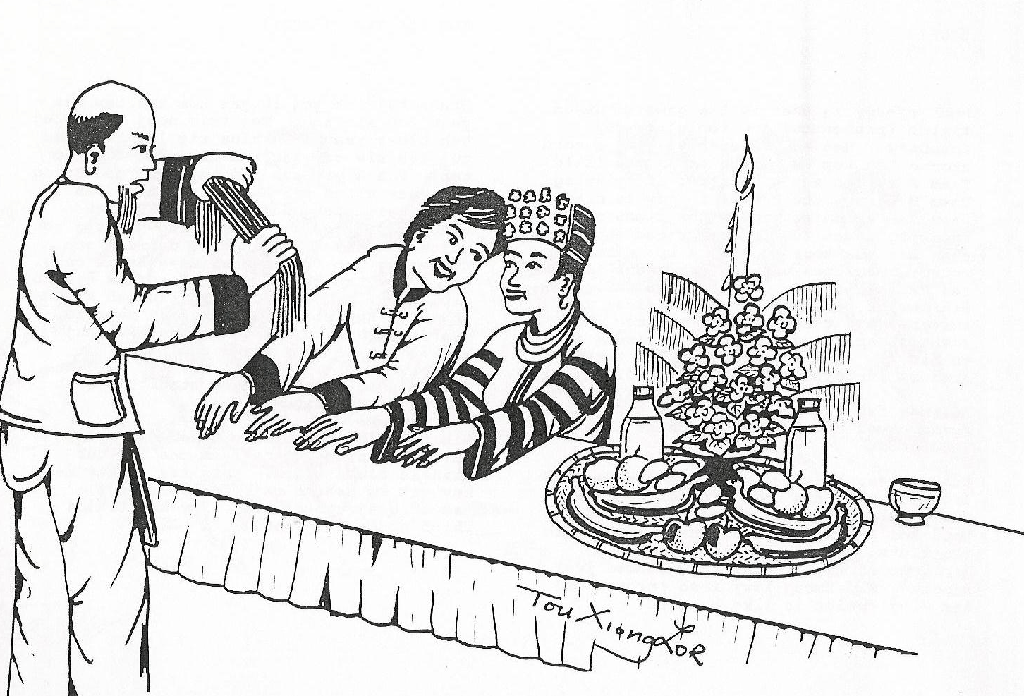
Hmong Traditions – Marriage

In the traditional Hmong marriage, Hmongs with the same clan name are forbidden to marry each other and therefore must find a marriage partner from another clan. For example, a Vang cannot marry another Vang. It is not acceptable to marry from your father’s side of the family. It is believed that people of the same clan are related, they are brother and sister, whether they are blood related or not. The reason for this is because it helps reunite two (2) clans together and helps with social status. Another reason is to help with procreation and economy production status within the clan. However, they are allowed to marry a family member, usually a cousin from their mother’s side of the family. For example, the children of a brother and sister can marry because they would be from different clans. The woman belongs spiritually to her family of birth (father’s clan) unless she marries and then she moves into her husband’s line of decent.
No matter what, she cannot return to her father’s clan even after divorce or widowhood. She no longer belongs to her father’s clan after marriage whereas the man continues to do so for life. For example, a married son would be considered part of the father’s clan and a married daughter would become the member of their husband’s clan. Traditionally, the older generation believes that marriage should be prearranged when a child is young. This helps ensures the families social and economy status within the clan. It is also a way for knowing that their child will be married off to a suitable husband/wife and family/clan. However, today the younger generations do not practice this; even some of the older generations barely practice this. This is because they live in America and have become “Americanized”. Some parents believe that if they let the child find themselves a husband or wife that they want to marry then it will be less incline for divorce.
In the Hmong community, Hmong people are allowed to marry at a young age. The average age of marriage in the Hmong community varies, but traditionally the boys and girls marry between the ages of 14 and 18 years. Typically the young girls start marrying at about the age of 13 or 14 and often marry older boys about the age of 16 to 18. One of the reasons to early marriage was the need for additional family members to work in the fields and in the house. It is prohibited by the American Law that Hmong people under the age of 18 cannot marry, especially to older men. Many of the older generation Hmong people feel that the Hmong marriage and courtship practice is under restriction by the American government. However, teenage marriage is still common in the Hmong society and the Hmong weddings are still being performed through Hmong rituals and verified true and correct by the Hmong laws.
This is by no means the same laws of the United States and according to American society Hmong people how marry under the rules of the The arrangement of a marriage follows the patterns of authority and respect within the family based upon age and sex, but also takes into account individual rights and the desirability of achieving general agreement. A father usually proposes marriage for his sons and judges the chosen husband for his daughters. The young men and women in question of marriage are allowed to actively participate in the spousal selection process and receive large input. Once a selection is made, family negotiations soon take place. Each family selects one or two neutral individuals who negotiate the details of the agreement. These negotiators prevent direct family-to-family confrontation.





Responses